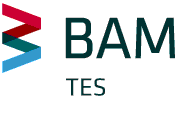Low specific activity (LSA) material means radioactive material which by its nature has a limited specific activity, or radioactive material for which limits of estimated average specific activity apply. External shielding materials surrounding the LSA material shall not be considered in determining the estimated average specific activity.
LSA material shall be in one of three groups:
- LSA-I
- uranium and thorium ores and concentrates of such ores, and other ores containing naturally occurring radionuclides;
- natural uranium, depleted uranium, natural thorium or their compounds or mixtures, that are unirradiated and in solid or liquid form;
- radioactive material for which the A2 value is unlimited. Fissile material may be included only if excepted;
- other radioactive material in which the activity is distributed throughout and the estimated average specific activity does not exceed 30 times the values for activity concentration specified in the tables for basic radionuclides. Fissile material may be included only if excepted;
- LSA-II
- water with tritium concentration up to 0.8 TBq/l;
- other material in which the activity is distributed throughout and the estimated average specific activity does not exceed 10-4 A2/g for solids and gases, and 10-5 A2/g for liquids;
- LSA-III
Solids (e.g. consolidated wastes, activated materials), excluding powders, in which:- the radioactive material is distributed throughout a solid or a collection of solid objects, or is essentially uniformly distributed in a solid compact binding agent (such as concrete, bitumen and ceramic);
- the estimated average specific activity of the solid, excluding any shielding material, does not exceed 2 × 10-3 A2/g.


